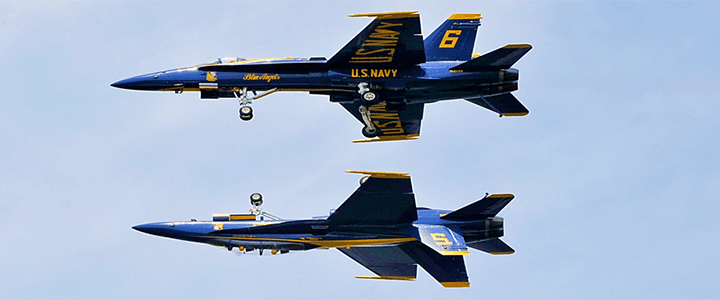I’ve read two articles in the past two days that have left me scratching my head. Well, truth be told, more than two; but two that are relevant here.
In one instance, Seattle resident Patrick Pilcher, a retired National Park Service ranger and Vietnam veteran, argued it was “time to retire the Blue Angels,” because the nation “should not use our armed forces as a traveling road show to entertain the masses or a high-tech recruiting measure.” In the second, Carolyn Haskins, an editorial intern for website “The Outline,” takes military social media to task, ostensibly for being done poorly, but really for posting “morbid content in an attempt to humanize themselves and connect with social media users.”
The damaging civilian-Military divide
One scarcely knows where to begin. Haskins, especially, falls victim to the old assumption that service members are not also humans, but mindless robots. She is the living embodiment of the statistic I’ve cited here before: among those Americans aged 18 to 29, only a third have an immediate relative who has served in the military at any time, peace or war. And since fewer than one percent of the population has served since 2001, the chances of any individual knowing an Iraq or Afghanistan veteran are – if not slim, than certainly far lower than during any previous conflict.
Both of these articles are indicative of the growing civil-military divide in the country. The average civilian simply doesn’t understand the military. The military has a responsibility to tell the American public what it is doing with their tax dollars and to sell itself to potential recruits. As the Department of Defense will tell you, this is the longest conflict in American history fought completely with an all-volunteer force. It’s really more than that; it’s essentially the only prolonged conflict fought with no conscripts whatsoever.
The need to connect the population to its professional warriors is more important than ever.
Everyone loves a jet fighter
Flying the FA-18, the Navy fighter used by the Blue Angels, is expensive. It costs $13,505 per hour to fly the FA-18C variant. That cost includes fuel, maintenance, and the salaries of the pilots and mechanics. For the Thunderbirds, Air Force’s demonstration team, the cost to fly its older F-16C is $7,692 per hour. So it’s understandable that some would think that there is a much better use for those aircraft than flying over air shows.
But let’s face it: there’s a reason Top Gun made more than $356 million at the box office (in 1986), continues to make millions in DVD, Blu-Ray, and download sales a year, and is looking at a possible sequel. People love jet fighters. Jet fighters inspire young people to join the military. Even though they know that statistically they’ll never fly one, or even be in one, just knowing they’ll be near powerful jet aircraft is enough for many young people. And there’s nothing wrong with that.
I agree the military needs to get a better grip on its marketing spending. The Army abandoned its NASCAR sponsorship because, while there was anecdotal evidence that it helped recruiting, no one could point to any empirical data that proved the program was responsible for enticing someone to enlist who wouldn’t have enlisted otherwise.
But the Blue Angels and Thunderbirds do more than just inspire young people to enlist. They instill pride. With so much negativity around us each day, there is nothing wrong with giving people a reason to be proud that they live in a country that allows them the freedom and security to watch multi-million-dollar aircraft perform daring feats while knowing that the aircraft is just there for show.
Military Social Media
But the military does not exist “just for show.” It exists for two reasons: to project enough strength to deter those considering attacking the U.S., and failing that, to defeat anyone who tries. That is a messy business. It involves breaking things, blowing things up, and killing people. It’s not or the faint-of-heart. That’s okay, too.
Social media is hard to get right. For every person who finds something pithy or cute or funny, there’s someone else who finds it offensive. But given the fact that the nation has been at war for almost 17 years, we shouldn’t feel compelled to hide the fact that the nation needs young people to fight, and if need be die, in that war. Nor should we be ashamed of the fact that we are at war.
War has always been part of the human condition, and no amount of pleading will change that. I’m sure that even in ancient Sparta, as Leonidas led the 300 to guard the pass at Thermopylae, among the women exhorting their husbands and sons to “come home carrying your shield, or on it,” there were plenty muttering, “we should be better than this.”
So when Haskins laments the military “propagandizing and idealizing military valor in order to normalize their actions, elicit acceptance from the public, and recruit new members,” or when Pilcher frets that the Blue Angels are “conjuring up horrifying images among many recent immigrants from war-torn countries,” I just roll my eyes.


